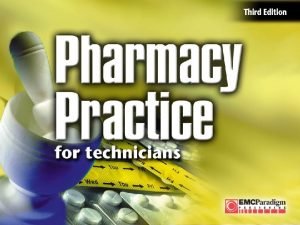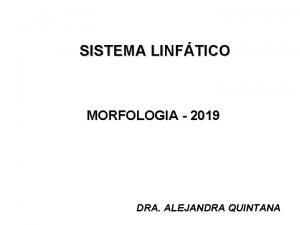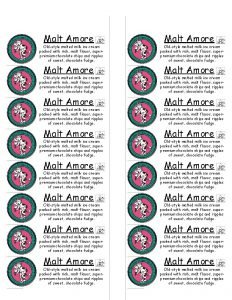Parenteral Medications Karen Malt MSN RN Parenteral Route










































- Slides: 42

Parenteral Medications Karen Malt, MSN, RN

Parenteral Route- commonly used when referring to medication given by injection. When the parenteral route is used the filtering effects of the liver does not occur. Therefore, more active drug will be in the circulation and the intended adverse effects may be more pronounced. (Older adults and children should be watched closely for adverse dug effects. ) The equipment needed to administer parenteral drugs consists of a syringe and a needle. Parts of a syringe; Plunger- withdraw and instill medication Barrel- Holds the medication Tip- Attaches to the needle Syringes are calibrated in m. L (milliliter), cc (cubic centimeter), U (units).

Insulin Pens – A hard plastic cylinder that looks much like a fountain (writing) pen. The cylinder contains a pre-filled reservoir of insulin. The dose of insulin is dialed and displayed in a window at the end of the syringe. When selecting the prescribed dose, each unit of insulin is accompanied by a clicking sound in the pen. Critical Thinking: Why is this advantageous to the diabetic client?

Insulin Pens The insulin pen automatically resets to zero following the injection. The insulin in the pre-filled pens is table for 30 days. A disposable needle is attached to the pen at during each use. Review Advantages and Disadvantages in Timby page 796.

Needles are supplied in various lengths and gauges. The Shaft (the length of the needle) depends on the depth to which the medication will be administered. Needle lengths vary from ½ inch to 2 ½ inches. The tip of the shaft is beveled of slanted to puncture the skin easily. A Filter needle contains a membrane that acts as a barrier blocking the entrance of glass shards when withdrawing from an ampule. The gauge refers to the needles width. Most commonly 18 – 27 gauge needles are used. The smaller the number the larger the diameter needle

Factors to Consider when Selecting a Needle The depth of the medication The depth of the tissue The volume of prescribed drug The viscosity of the prescribed drug The size of the client Review Table 34 -1 Common sizes of syringes and needles

Modified Safety Injection Equipment Needle Stick Safety and Prevention Act 2000 Conventional syringes and needles are being redesigned to avoid needle stick injuries and reduce the risk of acquiring a blood-borne viral disease. Hepatitis B (HBV) Hepatitis C (HCV) HIV/AIDS Currently there are 3 various types of safety injection devices: Those with plastic shields that cover the needles after its use Those with needles that retract I the syringe Gas pressured devices that inject medications without needles.

Techniques if Safety Devices Not is Use Scoop Method – Threading the Needle within the cap without touching the cap itself. Biohazard Container – The needle is left uncapped and placed immediately in the nearest sharps container.

Accidental Needle Stick Report the injury to a supervisor immediately Document the injury in writing Identify the client if possible Obtain HIV and HBV status results, if legal to do so Obtain counseling for possible infection Receive the most appropriate post exposure drug treatment prophylaxis Be tested for antibodies at appropriate intervals Monitor for symptoms and receive follow up https: //www. youtube. com/watch? v=F-d. Gb. Iux. I 68

Drug Preparation Withdrawing medication from an ampule or a vial or assembling a pre-filled syringe cartridge. Ampule- A sealed glass drug container. This type of container must be broken to withdraw the medication. A filter needle must be used to withdraw the drug. Vials- A glass or plastic container of parenteral medication with a self- sealing rubber stopper must be pierced with a needle or a needleless adapter to remove medication. The amount of drug in the vial may be single dose or have multiple doses. Sometimes these drugs are in powder form and must be reconstituted. Reconstitution The type of diluent used The amount of diluent to add The dosage per volume after reconstitution Directions for storing the drug If the medication can be used for more than one dose, the preparer writes the date, time, and initials on the vial label.

Practice Withdrawing Medication Timby, page 799 and 800

Pre-filled Cartridges A sealed glass cylinder of parenteral medication.

Combining Medications in One Syringe Sometimes it is necessary to combine more than one drug in a syringe. Exact amounts must be withdrawn from each container precisely, because there is no way of removing one without the other once in the syringe. Before mixing any drugs together the nurse must check for drug compatibility to ensure there will be no chemical interaction when combined. The chemical reaction will often create a precipitate (liquid that contains solid particles. )

Injection Routes Four Injection Routes Intradermal- between the layers of the skin Subcutaneous – beneath the skin, but above the muscle Intramuscular- injection in the muscle tissue Intravenous- injection into the vein See Figure 34 -10 in the textbook

Intradermal Injections Intradermal injections are used for diagnostic purposes. Example : Tuberculin Test and Allergy Testing Small volumes are used such as 0. 01 to 0. 05 m. L. Injection Sites; Inner aspect of the arm, back, posterior arm, upper chest. Injection Equipment Tuberculin syringe holds 1 m. L of fluid and is calibrated in 0. 01 m. L increments. A 25 – 27 gauge needle measuring ½ inch in length is commonly used. Injection Technique – When giving an intradermal injection, the nurse instills the mediation shallowly at a 10 to 15 degree angle of entry. See Diagram Timby page 802 Intradermal Injection sites

Critical Thinking What actions would be necessary if a client displays signs and symptoms of an allergic reaction to an agent given intradermally?

Subcutaneous Injections Subcutaneous injections are administered more deeply than an intradermal injection. Mediation is instilled between the skin and the muscle and absorbed fairly rapidly: Medications usually begin acting within 15 -30 minutes of administration. The volume to be administered is usually up to 1 m. L. The subcutaneous route is commonly used for insulin and heparin. Injection Sites: See Figure 34 -13 in Timby. The rate of absorption site from fastest to slowest; Abdomen, outer back area of the upper arm, the outer areas of the thigh, “wallet” area of the buttocks. According to Morris (2014) exercising these areas after injection can increase blood flow and hasten drug absorption from those areas.

Insulin Injection Sites The preferred site for giving a SC injection of Insulin is in the abdomen. Rotating within one injection site, preferably the abdomen, is preferable, rather than rotating to a different area with each injection. When the abdominal site is used, insulin is absorbed at a more consistent rate. Rotating sites prevents tissue injury. When rotating within one injection site, keep injections an inch or a finger width apart from previous site. Also, avoid a two inch central area around the umbilicus. Injection Equipment Insulin Syringe or pre-filled cartridge. 25 gauge needle commonly used. Needle lengths can vary from 1/2 to 5/8 inches. Injection Techniques Normal sized or obese client with 2 inch tissue fold inject at 90 degree angle. Thin clients who have a one inch fold of tissue, insert the needle at a 45 degree angle.

Insulin Injection (continued) NOTE: When administering Insulin, the tissue is usually “bunched” between the thumb and fingers to avoid injecting into the muscle. Bunching is NOT necessary when using an insulin pen, because the needle that is used is only 5 mm long and very unlikely to enter muscle.

Pharmacy Considerations Subcutaneous medications (other than insulin) should NEVER be given using an Insulin Syringes are calibrated for insulin only.

Administering Insulin The most common route of administration of insulin is SC or IV injection. Injectable Insulin is prescribed in units; a special syringe called an insulin syringe is used. The standard dosage strength of insulin is 100 units/m. L. Low Dose Insulin Syringe- Holds insulin doses of 30 – 50 units or less. Standard Insulin Syringe – Holds up to 100 units of insulin.

Insulin Injections Overtime, injection sites tend to undergo changes that interfere with absorption of the insulin. This is known as: Lipoatrophy- the breakdown of SC fat at the site of repeated injection sites. Lipohypertrophy – Thickening of the SC fat at the site of repeated insulin injections. Rotate sites at each injection.

Gerontologic Considerations Older clients with diabetes often have visual problems, considering an insulin pen may be more appropriate for this client. Older adults learning to self administer insulin, will often benefit from advanced training such as home health nurses etc.

Preparing Insulin from Vials Insulin Types Vary in their onset, peak effect, and duration of action. Nursing Consideration; Read Vials Carefully as Insulin Vials Look Similar! Some Insulins contain an “additive” which delays its absorption. Therefore, when preparing other than rapidacting, short-acting, or Lantus (Long-acting) insulin the nurse will rotate the vial between the palms to ensure redistributing the “additive. ”

Mixing Insulin in One Syringe Most types of insulin are mixed just prior to administration, due to insulins tending to bind together or unique characteristics of each off set those of the other. When injected within 15 minutes of mixing, the insulin acts as though they had been injected separately. Rapid Acting Insulin and short acting insulin, which are additive free are often combined with intermediate acting insulin. Long Acting Insulin (Glargine) is NEVER mixed with any other type of insulin! Some pharmaceutical companies provide combination insulins premixed in a single vial. Novolin 70/30 – 70% intermediate acting, 30% short acting Humulin 50/50 – Equal amounts of intermediate and short acting

Insulin Onset Peak Duration

Insulin Pumps Some people with diabetes prefer the use of an insulin pump rather than a syringe, needle and or insulin pen. An insulin pump is a small, programmable computerized device that contains 180 – 315 units of rapid acting insulin that can be refilled from vials. Insulin is released from the device through a catheter attached to a needle in the skin. The pump acts similar to a natural pancreas. It releases small amounts of insulin continuously and can release an additional amount after a meal. https: //www. bing. com/videos/search? q=youtube+insulin+pump+use&qpvt=youtube +insulin+pump+use&view=detail&mid=11281 CE 476 C 768 E 652 E 711281 CE 476 C 76 8 E 652 E 7&&FORM=VDRVRV

Administering Heparin is an anticoagulant drug. That means, this drug prolongs the time it takes for blood to clot. Heparin is frequently administered SC as well as IV. Heparin is supplied in multi-dose vials or pre-filled cartridges. The dosages are very small volumes and may require a tuberculin syringe to ensure accuracy. When administering Heparin to prevent local bruising. Change the needle after filling with the dose of heparin (before injecting the client). DO NOT clean with alcohol wipe prior to injection. DO NOT aspirate with the plunger. The needle is left in place for 5 seconds. Press on injection site for any bleeding, but NEVER Rub!!! Rotate injection sites.

Administering Heparin The dose of unfractionated (standard heparin) may change depending on the route of administration. The dose is determined after reporting lab results of the client’s Partial Thromboplastin Time (PTT). Some client’s are prescribed one of several low molecular weight heparins such as Lovenox has the advantage of being prescribed in a consistent daily dose with no or fewer blood tests, less side effects, and can be self administered out of the hospital. According to Timby, 2017, 30% of all hospitalized clients will receive heparin therapy. BE AWARE that vials of heparin come in various dosages: 20, 000 units/m. L 10, 000 units/m. L 5, 000 units/m. L

Intramuscular Injections An IM injection is the administration of up to 3 m. L of medication into one muscle or muscle group. Because deep muscles have few nerve endings, irritating medications are commonly given IM. Except for IV, Absorption from an IM injection happens rapidly. NEVER administer an IM into a limb that is paralyzed, inactive, or affected by poor circulation. Avoid the arm of a client with a mastectomy or a client with a shunt for dialysis.

Injection Sites (IM) There are 5 IM Injection Sites named for the muscles into which the medications are injected: Ventrogluteal Vastus Lateralis Rectus Femoris Deltoid Dorsogluteal

IM Injection Sites Ventrogluteal Site – uses the gluteus medius and gluteus minimus in the hip for injection. Major Disadvantage; there is only a small area for administering the injection. This site has several advantages: NO large nerves or blood vessels Usually less fatty and cleaner because fecal contamination is rare here Favored injection site for adults, but also acceptable for children. https: //www. youtube. com/watch? v=2 Ya. B 9 crn. Pd. U

IM Injection Sites (continued) Vastus Lateralis Uses the vastus lateralis muscle; one of the muscles in the quadriceps group of the outer thigh. Large nerves and muscles usually absent which makes it a safer site. Desirable for infants and small children, clients who are thin/debilitated. https: //www. youtube. com/watch? v=Qr. SJTj. NJR 6 s

IM Sites Rectus Femoris Site the anterior aspect of the thigh. May be used for infants. The nurse will place the injection in the Middle third of the thigh, with the client sitting or supine.

IM Injection Sites (continued) Deltoid Site- Lateral aspect of the upper arm is the least used site because it is a smaller muscle than others. Used for children. Risk of damaging the radial nerve and artery if the site is not well identified. https: //www. youtube. com/watch? v=u. ZOr. P_Ncjp. U

IM Injection Site (continued) Injecting medication into the gluteus maximus in the buttocks. Least preferred site for an IM injection. Many educators are excluding this site for the following reasons. Sciatic nerve damage Superior Gluteal artery may be pierced The depth of the gluteal muscle is usually greater than the length of the needle. If the medication is placed in the SC tissue accidentally the client may experience unnecessary pain/discomfort. Decreased rate of absorption may lead to overdose of client. https: //www. youtube. com/watch? v=Bl. Wcyo. U 5 Rk 8

Critical Thinking Mrs. Smith is a 93 year old client with dementia and receives a monthly B 12 injection for pernicious anemia. The nurse caring for her may want to make certain considerations prior to giving this IM injection…. Identify those considerations…. .

IM Injection Equipment Usually 3 – 5 m. L syringe. 22 gauge needle that is 1½ inch long.

Injection Techniques When administering IM injections: Use a 90 degree angle for piercing the skin. Nurses use the Z-Track method (a technique for manipulating the tissue to seal a medication in the muscle) to administer IM injections for drugs that may be irritating to the upper layers of skin. Also, sometimes called the zigzag technique. The maneuver resembles the letter “Z”. https: //www. youtube. com/watch? v=IPp 28 ZGgobw

Reducing Injection Discomfort Use the smallest gauge needle appropriate Change the needle before administering a drug that is irritating to tissue. Select a site that is free from irritation Rotate injection sites Numb the skin with an ice pack before the injection Insert and withdraw the needle without hesitation Instill the medications slowly and steadily Use the Z-Track technique for IM injections Apply pressure to the site during needle withdrawal Massage the site after the injection Have client do deep breathing, avoid watching needle going in, ambulate or move the extremity as much as possible

Consider This For client’s who fear IM injections: Use EMLA Cream (Eutectic Mixture of Local Anesthetic. ) Reduces local discomfort by numbing the area. Apply the cream 1 – 2 hours before the injection. EMLA is best suited for multiple administrations such as weekly injections for IM medications.

Practice Injections (See Timby, 20017 pages 813 - 819) Intradermal Subcutaneous Intramuscular
 Route of drug administration definition
Route of drug administration definition Intraperitoneal route advantages and disadvantages
Intraperitoneal route advantages and disadvantages Nonparenteral
Nonparenteral Types of dosage forms
Types of dosage forms Types of parenteral routes
Types of parenteral routes Local route of drug administration
Local route of drug administration Route card manufacturing
Route card manufacturing Toi
Toi Medications
Medications 5 rights of medication
5 rights of medication Chapter 30 administering medications
Chapter 30 administering medications List of high-alert medications jci
List of high-alert medications jci Sick day medications
Sick day medications Common pediatric medications
Common pediatric medications Migranal
Migranal Chapter 11 medications and drugs
Chapter 11 medications and drugs Floor or ward stock system
Floor or ward stock system Definition of medication reconciliation
Definition of medication reconciliation Tuohy needle sizes
Tuohy needle sizes Chapter 30 administering medications
Chapter 30 administering medications Mock code steps
Mock code steps High risk medications
High risk medications Hepatitis c symtoms
Hepatitis c symtoms Madrs skår
Madrs skår Malt and galt
Malt and galt Igraine arthurian legend
Igraine arthurian legend Malt color chart
Malt color chart Orfiril bipolar
Orfiril bipolar Malt and galt
Malt and galt Malt mil
Malt mil Vaina linfatica periarterial
Vaina linfatica periarterial Immune system innate and adaptive
Immune system innate and adaptive Splenomegaly and hypersplenism
Splenomegaly and hypersplenism Glen turner the malt legend
Glen turner the malt legend Que libro es
Que libro es Super fudge
Super fudge Msn fritzbox
Msn fritzbox Msn
Msn Chamberlain fnp program curriculum
Chamberlain fnp program curriculum Msn cloud storage
Msn cloud storage On which playing card is the cardmaker's trademark
On which playing card is the cardmaker's trademark Msn
Msn Msn messenger chat rooms
Msn messenger chat rooms





























































